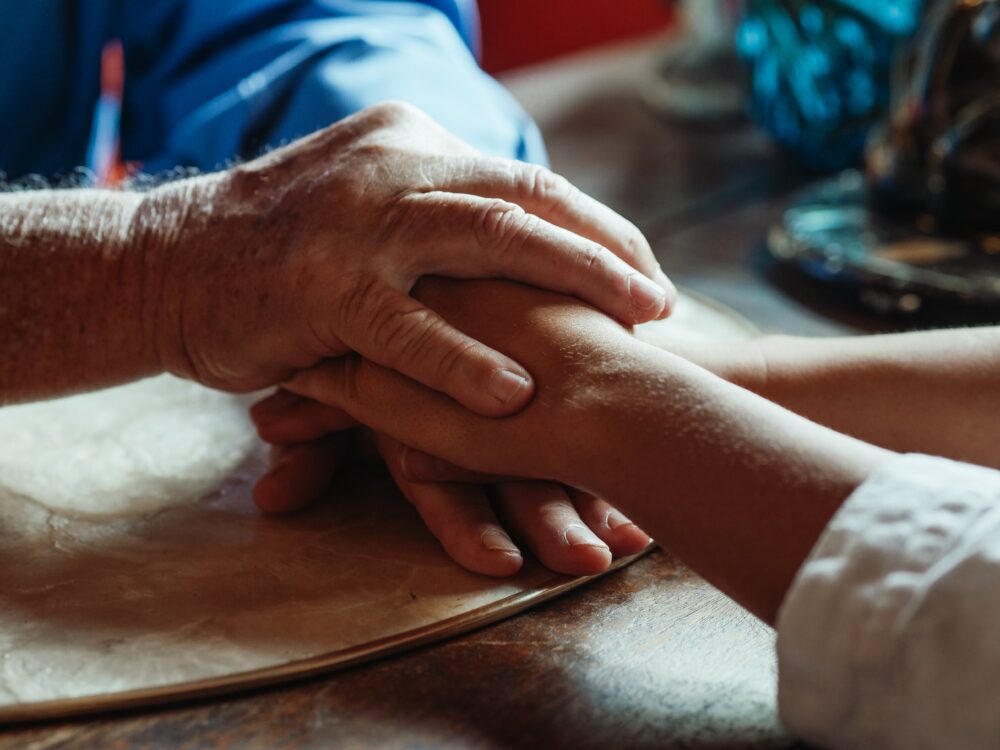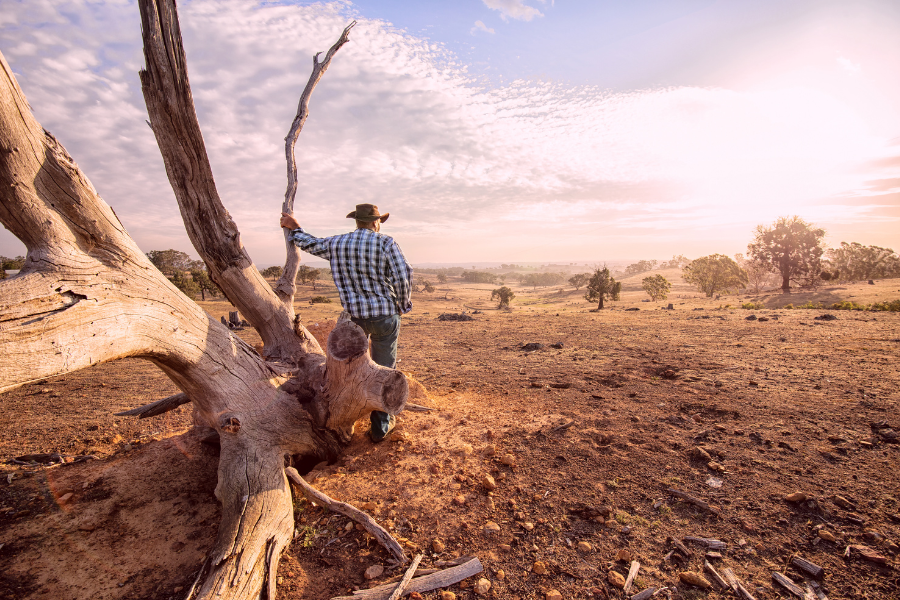Skip to section
ToggleHaving a co-pilot is recommended
Often when grief and loss take over our life, we need extra support. In fact, when embarking on any kind of grief work, it’s a good idea to seek the help of a health professional such as a counsellor or psychologist. They make a point of listening for and illuminating strengths and resources when clients are in crisis. Take our Griefline volunteer counsellors, for example; their training and skills make them adept at drawing out Help-Seeker strengths in a single, anonymous phone call.
According to Stoerkel, longer-term strengths-based therapy is a specific style of counselling where you become the storyteller. Your story might be one of trauma, pain and stress from the past or present, but a strengths-based practitioner aims to guide you to a mindset of survivor rather than victim. The aim is for you to gain control of your skills and strengths and ultimately win the battle to integrate your loss into a new way of living.
Please note: the tools and activities explored below are best approached with the help of a mental health practitioner and do not replace therapy. A professional will help you draw out hidden insights, gain more clarity and form a better understanding of whatever surfaces. Many practitioners also offer comfort and reassurance when the grief work gets tough.
Internal strengths
You can engage in some inner strengths exploration by taking one of the many personality and strengths tests available. We’ve identified a couple below.
The Values in Action Character Strengths Survey
This free online survey helps you to “explore what’s best in you”. Based on empirically proven studies that identified 24 character strengths common to people from all cultures and ethnicities. Each trait fits within one of six virtue types; wisdom, courage, humanity, temperance, justice and transcendence. The character traits cross the gamut of all that is great in a human and include such wonders as creativity, curiosity, love of learning, kindness, bravery, perseverance and forgiveness.
By taking the survey, you’ll discover your unique strengths profile and what’s best about your personality. What’s more, once you’ve identified the top positive traits to ‘cultivate and celebrate’, you can put these into action to give your grief journey a little more direction.
You, At Your Best
This strengths-awareness exercise by Niemic is one of several offered through the positivepsychology.com website.
Many of us find it difficult, if not boastful, to rattle off a list of personal qualities, especially when we’re still reeling from a loss. This task helps you see your strengths in the context of a past experience, giving you a more objective perspective.
The exercise asks you to remember and write about a time when you were at your best and to identify the strengths you used at that time. Whether it was a positive and enjoyable event or a difficult situation requiring you to rise to the challenge…choose one of your proudest moments.
Your written piece should fully explore how the events unfolded, your purposeful actions that led to success, and the feelings you experienced along the way. Ensure your story has a beginning, middle and impressive end. On completion, read through your account and identify elements that highlight your strengths.
Finally, write out the list of strengths you’ve identified…and allow yourself a moment of self-satisfaction.
Tracking down your external strengths
Why staying connected = staying strong
In Part 1, we established social support as a key source of external strengths. However, for some of us, staying connected to people while grieving can feel uncomfortable, exhausting and frustrating. Try to remind yourself, however, that the benefits of human connection are profound. According to Pearlman, people who feel supported are more likely to:
- Have reduced symptoms of grief over time
- Regain hope for the future faster, thanks to positive human experiences
- Engage in healthy self-care activities such as walking with a friend
- Be distracted from their grief, even if momentarily
- Start to look towards the future thanks to the influence of new people, activities and ideas.
The hallmarks of a good support network
Three key components make up a robust support network:
- A confidante/s to discuss your problems with
- Trusted person/s to provide practical help
- People with whom you share feelings of love, intimacy, or friendship
However, many bereaved people find their relationships dramatically shift after a loss. The following exercises help you explore your social network, giving you a better understanding of how it’s changed while identifying its strengths and weaknesses.
Social Support Self-Assessment
Spend some quality time with yourself to undertake a self-assessment. Pearlman suggests asking yourself the questions below and answering them with detailed honesty.
- How does your social support network appear now? Who’s in it?
- Have you lost social contacts or resources?
- How has your support base changed since the loss? E.g. have good friends stayed away while others have stepped up?
- How have your relationships with old friends changed? How do you understand these changes?
- Write about social situations where you felt misunderstood. Consider what you were feeling at the time.
- Have you experienced a loss of connection with others? Are you isolating yourself at home more and rejecting social invitations?
Circle of Support
The Circle of Support exercise fulfils two functions. Firstly, it helps us identify who, why and how our support people are important to us, often bringing to mind support resources we hadn’t even considered. Secondly, it illuminates any shortfalls in our social network.
- Start by writing ‘me’ in the middle of a blank piece of paper and draw a circle around yourself. Just outside of that, write down your closest supporters. Your inner circle might include family members, close friends, mentors, even pets. Psychologist Erica Sirrine, PhD, LCSW, FT, gives us a prompt; “these are people who make you feel lighter, allowing you to breathe again in their presence”. Enclose them in another circle.
- Next, add those people or resources who provide a different type of support
- Continue in this manner until you feel you’ve exhausted your options. You can plot multiple names per circle, indicating they provide a comparable level of support.
- Consider people in your network who offer you different forms of support, such as a distraction from your grief, someone who looks out for your welfare, has a shared experience or makes you laugh.
- Some of us end up with multiple circles and resources plotted out on our page, while others may have exhausted their support options after only one or two circles.

Sirrine equates these concentric circles to the rings of a tree. Multiple rings represent a strong, established and resilient tree, however just a few rings can reflect an unsupported and vulnerable tree. So how can we enlarge our circle to promote growth and develop resiliency?
Set some social support goals
Pearlman suggests more self-reflection to help crystallise what you want and need from your support network. Ask yourself these questions and talk through your responses with a professional or trusted person.
- Who can I turn to for emotional support?
- Who is a good listener? Someone I can talk to freely about my loss?
- Who can help me to get out and about again? Who are the people most likely to invite me to events? Perhaps, someone I’ve turned down recently.
- Who can help me with practical tasks, e.g. lawn mowing, cooking, grocery shopping, taxes?
- What is the reaction when I ask for help? Am I supported and encouraged or discouraged?
- What parts of my culture help or hinder my ability to reach out?
- What parts of my religion/spirituality help or hinder my ability to reach out?
Engage your strengths
All people have inherent value, the ability to grow and change and tendency toward self-correction, and remarkable resilience.
The ability to identify and engage in your strengths in day-to-day life can bring about significant personal growth. You’ll benefit from elevated levels of “vitality and motivation” increased self-confidence and productivity, not to mention a better sense of direction for the future ahead.
So, now that you’ve reflected on and documented your strengths, it’s time to capitalise on them.
A mini-action plan
The outcome of this three-step planning process is a mini-action plan for strengths-utilisation. Focus on three crucial areas of your life such as relationships, career and personal fulfilment.
- List the strengths you possess in each area.
- Describe a specific time your strengths were able to help you.
- Describe and plan out two new ways you can use your strengths in each area.
Strengths for problem-solving
Ask yourself which strengths you can use to deal with your current problems, e.g. how to tackle your loneliness, work on your physical health, address your lethargy or improve your low mood. The case studies below might inspire you.
Internal Strength engagement:
‘Janet’, 72, feels like she lost her identity as ‘wife’ when her husband passed away. The losses left her isolated and lacking motivation. But, when she recognised an untapped strength – a love of learning, she applied the lens ‘what am I learning?’ to her grief process. Her self-exploration inspired her to embark on a study of psychology, giving her a new sense of confidence, renewed enthusiasm and purpose in life.
External Strength engagement:
‘Michael’, 28, lives with a disability. He often feels lonely and misunderstood. He seeks support from the Griefline Helpline. The experience helps him to feel valued and validated.
Strengths for value-adding
Take it up another level. Explore ways to use your resources to add value to your life. Whether it’s a new hobby to bring moments of happiness, a legacy project to memorialise your loved one, or a whole new career path bringing new meaning and purpose.
Internal Strength engagement:
‘Miriam’, 48, the daughter of a terminally ill woman, draws on her strengths of devotion, hard work and reliability to act as her mother’s full-time carer. The role helps to propel her through her anticipatory grief. And her newfound sense of competency inspires her to take a volunteering position at the palliative care hospital following her mother’s death.
External Strength engagement:
When ‘Ron’, 54, loses ‘Rosie’ – his constant companion of 15 years, he needs help to lift his constant low mood. So he enlists the support of his local Sheepdog club and starts a farm-stay program for bored, destructive city-based sheepdogs. Ron derives a sense of purpose from teaching the dogs to round up the sheep, enjoyment from watching them live their best life and gets a chuckle out of handing them back exhausted, smelly and caked with mud. So he renames the farm “Rosie’s Retreat”.
You’re off to a strong start
Using our strengths helps us feel energised, raises our levels of self-worth and self-esteem, and improves our overall well-being. As a result, we’re likely to be more pragmatic about the twists and turns in life’s journey and enjoy a renewed sense of optimism, confident in the knowledge that we are special and valued.
There’s no doubt that strengths-exploration for those experiencing grief and loss takes courage and commitment. It can be an arduous journey, but it’s likely to be a fruitful one – opening you up to change, providing fertile ground for personal growth and giving you a chance to find hope again.
It’s an epic quest, but the reward is worth it – you may just find your best life after loss.
References and further reading
Freij, A. (2009). Strengths and Positive Psychology: The Strengths Recipe for Success. Positivepsychology.org.uk. Positivepsychology.com
Niemiec, R. (2012), VIA Institute on Character. https://www.viacharacter.org/about/people/ryan-niemiec
Pearlman, L. A. (2014). Treating traumatic bereavement: a practitioner’s guide. Guilford Press.
PositivePsychology.com (2020). 3 Strengths Exercises for Helping Professionals. PositivePsychology.com B.V.
Samuels, J. (2021). Shattered Assumptions: Treat Grieving Clients Whose World Has Been Turned Upside Down. The Grief Summit: Grief Counseling and Treatment in a Pandemic of Loss. PESI.com. https://catalog.pesi.com/speaker/joy-samuels-444400
Sirrine, E. (2021). Anticipatory Grief: Help Clients Face Impending Loss and Uncertain Futures. The Grief Summit: Grief Counseling and Treatment in a Pandemic of Loss. PESI.com https://catalog.pesi.com/speaker/erica-sirrine-6956
Stoerkel MSc., E. (n.d.). What is a Strengths-based approach? positivepsychology.com. https://positivepsychology.com/strengths-based-interventions/
TherapistAid. (n.d.). Strengths-Based Therapy. Therapist Aid. https://www.therapistaid.com/therapy-guide/strengths-based-therapy
VIA Institute of Character. (n.d.). The VIA Character Strengths Survey. viacharacter.org. https://www.viacharacter.org/character-strengths
Welfare, L., Farmer, L., & Lile, J. (2013). Empirical Evidence for the Importance of Conceptualizing Client Strengths. Journal of Humanistic Counseling, 52(2), 146–163. https://doi.org/10.1002/j.2161-1939.2013.00039.x
Related resources:
- Grief Recovery Part 1: In Search of Lost Strengths How recognising and tapping into personal strengths can help you...
- Coping with Grief Losing someone or something we treasure can leave you feeling...
- Relationship Loss: Coping with the end of a relationship The end of any meaningful relationship may come as a...
- The Different Types of Grief Grief and loss come in many forms and we all...
- Natural Disasters Coping with a disaster takes time but how much time...
- Grief and loss: How to cope with loneliness and isolation Loneliness and social isolation have become significant health and wellbeing...
- Major Transitions in Life Change is unavoidable. Sometimes it is planned and other times...
- Financial stress and grief: How to cope with financial loss Financial stability is not the first thing that comes to...












